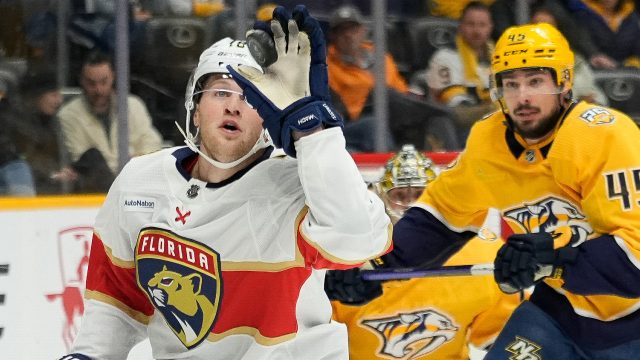
If you have leverage, use it.
Yes, the Toronto Maple Leafs heard Nick Robertson’s trade wish. But, no, they were not going to let a restricted free agent with modest market value force his way out of town.
Clearer heads prevailed one week before training camp and one day before Robertson’s 23rd birthday, as the player inked a team-friendly, one-year, $875,000 extension.
Call it a win for management and a wise concession for Robertson — who accepted a marginal bump from his $813,750 qualifying offer but now has a shot to play his way out of town or into the new head coach’s good books.
“We look at Nick as an excellent player, and there’s great opportunity for Nick here, and we need him to be a good player for us,” Leafs GM Brad Treliving said earlier this summer, when news of Robertson’s discontent made the rounds.
The source of Robertson’s frustration is understandable.
Dedicated to his craft, the young winger has never made the Maple Leafs roster out of training camp, his waiver exemption and the club’s cap constraints conspiring against him.
A 55-goal-scoring Ontario Hockey League phenom who scored his first NHL goal in the 2020 playoff bubble, Robertson has battled a number of injuries since being drafted in 2019 and has often been the first forward sent down to the Marlies or up to the press box when someone new comes along.
The younger Matthew Knies surpassed him on Toronto’s depth chart. So did late-bloomer Bobby McMann.
Had Robertson stuck to his guns and not reported to camp, hopefuls like Easton Cowan, Steven Lorentz, Alex Steeves, and Alex Nylander would battle for his vacated minutes.
Treliving had other options.
And for Robertson, who only has 87 big-league games on his résumé, not playing hockey was a horrible option.
Rescinding the trade request took some convincing, we’re told. And as the Leafs experienced recently with the Rasmus Sandin’s RFA stalemate, Robertson’s signing hardly prohibits a trade in the future.
Robertson’s scoring ability and effort level have never been questioned. His skating, durability and D-zone play, however, are a different story.
There is room for improvement.
There is also clean look at bigger payday a year from now.
Producing well in 2023-24 despite limited opportunity and next to zero power-play time — 14 goals, 27 points in 56 games — Robertson requested a trade, via agent Pat Brisson, after getting healthy-scratched for the Maple Leafs’ Game 7 loss to Boston in Round 1.
Although Robertson failed to earn the trust of former coach Sheldon Keefe, an overhauled coaching staff and the free-agency departure of Tyler Bertuzzi should present the winger with more prime opportunity to use his heavy shot and sneaky play-making ability.
If Robertson can sharpen his defensive game and establish himself as an everyday contributor, he’ll help himself and the team that drew a hard line in negotiations.
Getting the Robertson file taken care of quiets next week’s training camp noise and also gives Treliving some cap clarity while the GM considers some other signings (Lorentz, defenceman Jani Hakanpaa, free agent Max Pacioretty) before puck drop.